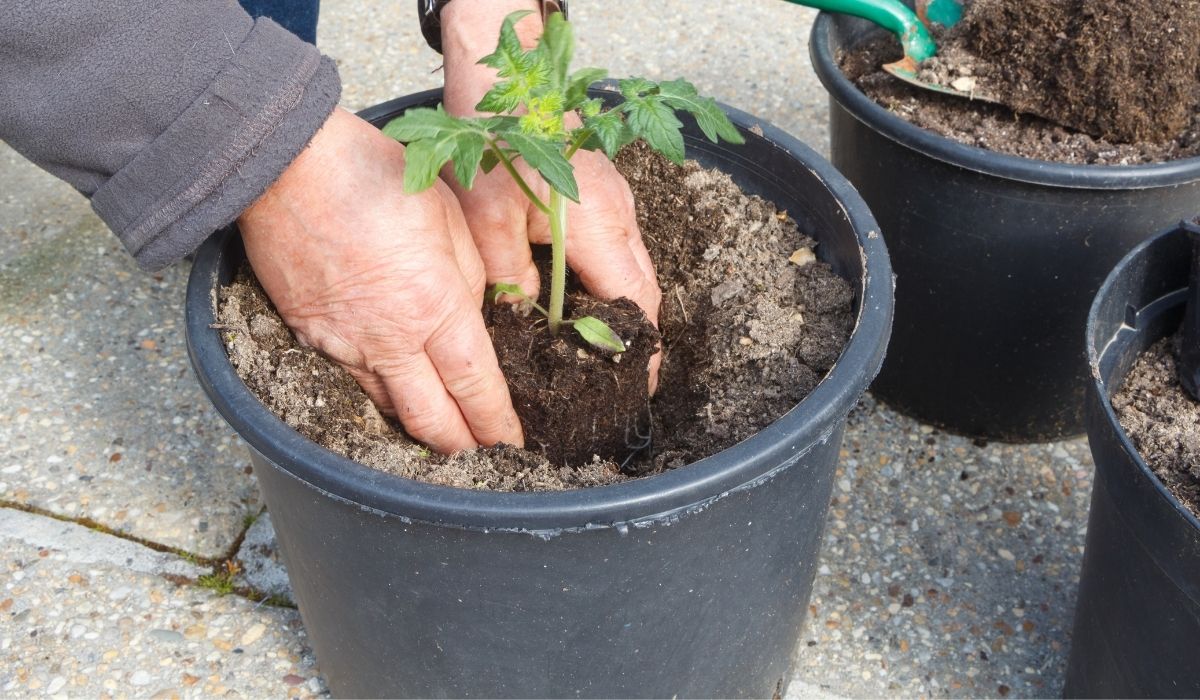The best soil for tomatoes and peppers is well-drained, rich, and fertile loam soil with a pH of 5.8 to 7.0.
Tomatoes and peppers are both vegetables that thrive in warm weather. These two vegetables are commonly grown by most gardeners and can be planted together in the same garden. However, there are a few things you should know before planting them together.
Soil Requirements:
Both tomatoes and peppers prefer well-drained, rich, and fertile loam soil with a pH of between about five and a half and seven. If your soil is not within that range, you can amend it before planting either vegetable. Adding compost or organic matter will help to make your soil more fertile, while sulfur can lower the pH if it is too high.
Fertilizer:
Epsom salt is a good fertilizer for green bell peppers. Miracle Grow is an all-purpose fertilizer.
Read more about 6 Tips How To Make Lawn Soil Softer
Planting:
These two vegetables can be planted together in the same garden bed, as long as you also plant them with other crops to help prevent disease and pests from attacking one or both plants. Most home gardens do best with raised beds to improve drainage and soil quality. Create a separate garden for tomatoes alone and peppers alone if possible, and rotate them every year so that they are not growing in the same location two years in a row. This helps reduce pest problems too, because some diseases affect only one of these plants but not the other.
What Is The Best Soil For Tomatoes And Peppers?
The best soil tomatoes and peppers must have the following qualities:
- Well-drained. Well-drained soils have the ability to let water escape, keeping the soil from becoming saturated and boggy. This is important for both tomatoes and peppers, as wet soils can cause root rot and other diseases.
- Rich and fertile. Good soil for vegetables should be rich in organic matter, which will provide essential nutrients to your plants. Fertilize your soil with compost or organic matter to improve its fertility. If you have sandy soil, consider adding some clay and/or vermiculite to help it retain moisture longer.
- pH between about five and a half and seven. Tomatoes and peppers prefer slightly acidic soil with a pH of between five and a half and seven. If your soil’s pH is not within that range, you can amend it before planting either vegetable by adding compost or sulfur. You can add compost to make it more fertile, and sulfur if necessary to lower the pH. Do a soil test before planting either vegetable so that you know what kind of amendments are needed in advance. Add them at least two weeks before planting time, so they have enough time to be effective. If your garden already has good drainage but needs some extra nutrients added, then just spread some compost over the top of it after removing any weeds or grasses growing there first (this will also prevent new ones from coming up later).

The Best Soil For Tomatoes And Peppers Growing In Containers
Tomatoes and peppers do well when grown in containers too. To get them to successfully grow, you should provide them with good soil that is favorable for their growth and production.
Good potting soil should be
- Lightweight mixes such as bark or perlite
- Well-drained with plenty of organic matter added to it before planting time
- Well moisturized – not too much nor too little water.
Learn more about The Best Soil For Herbs And Veggies
How To Make The Best Soil For Tomatoes And Peppers?
To make the best soil for tomatoes and peppers, use a mixture of composted manure, leaf mold, or peat moss with some sand. The best way to do this is by adding these ingredients together before planting time, so they have plenty of time to mix naturally in your garden bed.
If you are growing them in containers, then just add one part each (by volume) into three parts potting medium such as vermiculite or perlite mixed with two parts regular humus-rich topsoil from outside your home. You can also purchase an all-purpose potting mix that has been formulated specifically for vegetables like tomatoes and peppers at most gardening stores near you that sell gardening supplies.
You can also use peat moss instead of composted manure if desired, but it will not be as nutritious for your plants. You may need to add some additional nutrients like nitrogen fertilizer before planting time, so they have plenty of time to mix naturally in your garden bed or container garden area first because these vegetables require high amounts while growing actively during summer months when temperatures are hot outside!
If necessary, however, do not worry about adding nutrients later on after planting because they will be released naturally from decomposing organic matter over time.
Find more information about Best Soil For Tomatoes In Grow Bags – A Guide To Grow Nutrient Rich Tomato Plants
Frequently Asked Questions
[rank_math_rich_snippet id=”s-9063c0c0-cb02-4727-960d-26e9fa8e5b6c”]
Final Thoughts On The Best Soil For Tomatoes And Peppers
The best soil for tomatoes and peppers, as we have seen above, must be well-drained, moisturized, rich, and fertile. It must also have a good pH level that keeps the plants from burning their roots and dying. You can achieve this by adding compost to your soil before planting time or buying a bag of a potting mix that has been formulated specifically for vegetables like tomatoes and peppers at most gardening stores near you that sell gardening supplies.
Read more about The Best Soil For The Avocado Plant

